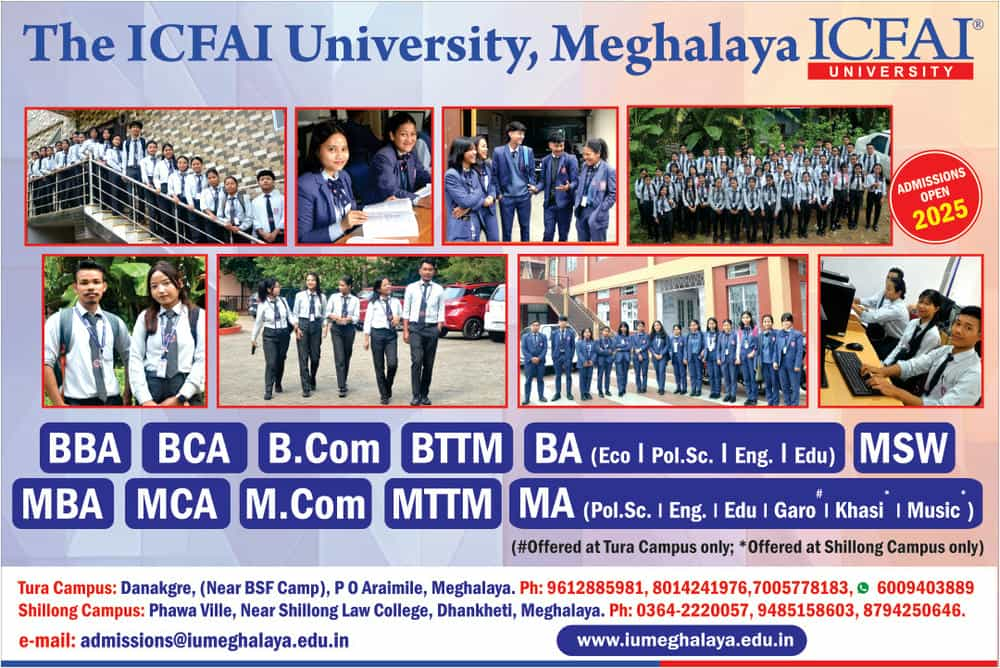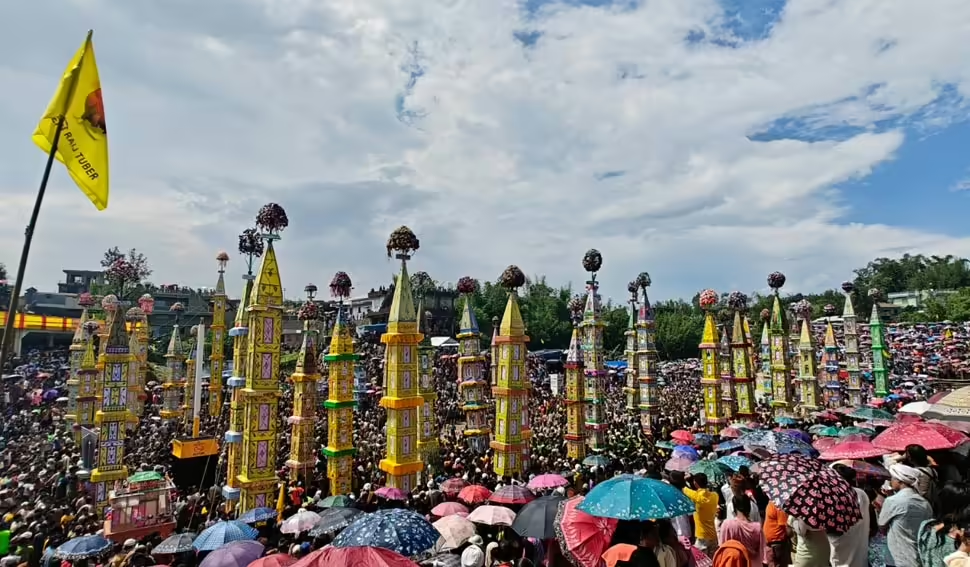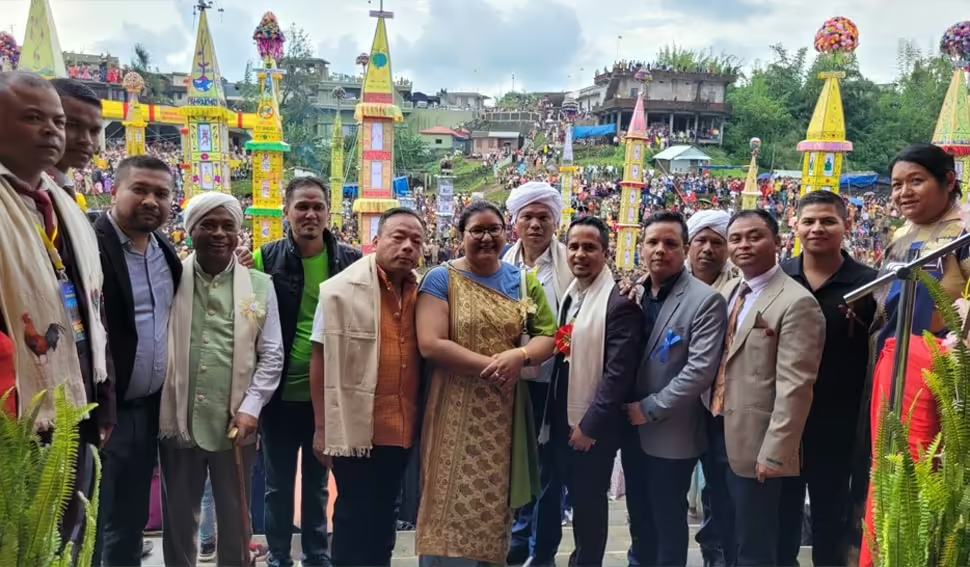Paul Lyngdoh announces boost in funding for Tuber Behdeiñkhlam Festival

The four-day annual traditional festival of the Raij Tuber concluded with great enthusiasm on July 19 at Biar Blai (Sacred Pool) in Tuber Kmaishnong Village. Behdeiñkhlam is one of the six traditional Behdeiñkhlam festivals organized by the people who still follow the traditional religion in Jaintia Hills.
Dignitaries including Minister of Arts and Culture, Paul Lyngdoh, Minister of Revenue and Disaster Management and MLA Khliehriat Kyrmen Shylla, Dy CEM JHADC Lasky Rymbai, Sutnga Saipung MLA Santa Mary Shylla, Jowai MLA Wailadmiki Shylla, Paiem Ainam Manik Syiem, Syiem of Mylliem Hima, Dolloi Elaka Jowai Puramon Kynjing and others were present on the occasion. Tens of thousands of people attended the closing ceremony of the Behdeiñkhlam festival.
The festival, which began on July 16, featured various rituals performed by the Lyngdoh, Wasan and Sangot. On the final day, 30 villages from East and West Jaintia Hills brought 69 colourful rots (paper monuments) to Biar Blai, promoting messages like eradicating HIV, fighting drug abuse, and protecting animals.
Addressing the gathering, Bah Paul Lyngdoh congratulated the Seinraij Tuber. He said that this ritual showcases to the world the richness of customs, traditions, and culture, which the government is committed to improving, developing and enhancing.
In a memorandum submitted by the President of Seinraij Tuber, Helping Phawa, on the need for another gallery, Paul Lyngdoh assured that the Department of Arts & Culture will support the needs of Seinraij Tuber. He also announced that the financial support to make the festival grand will be increased from Rs 3 lakhs to Rs 15 lakhs.

The important rituals of the festival include ‘Knia Ryngkaw,’ an offering to the Goddess who guards over the Raij, performed by the Priest or ‘Longdoh,’ assisted by religious elders at Mukoi Ryngkaw. Other rituals include ‘Rah Bhang Blai’ and ‘Choh Thyndai,’ which were performed on Day 3, July 18. On the first and second days, the faithful from Phangwah village in the South and Phangnein village in the North exchanged greetings and performed rituals together.
The last day of the festival featured the “Beh Khlam” ritual, which took place early in the morning. During this ritual, hundreds of members of Sein Raij at Tuber held sticks (similar to long fishing rods) and ran from West to East in the village, beating anything in their way to drive away plagues.

The last two rituals performed before and after immersing all the Rots brought to the sacred pool were ‘Ka Iatan Bhang Blai,’ similar to a tug-of-war game, and ‘Iaslait,’ similar to wrestling. In ‘Ka Iatan Bhang Blai,’ a group representing Phang Nein from the North competed against Phangwah from the South. It is believed that if Phang Nein wins the game, the northern part of Raij Tuber will be more fertile.

Leave a Reply